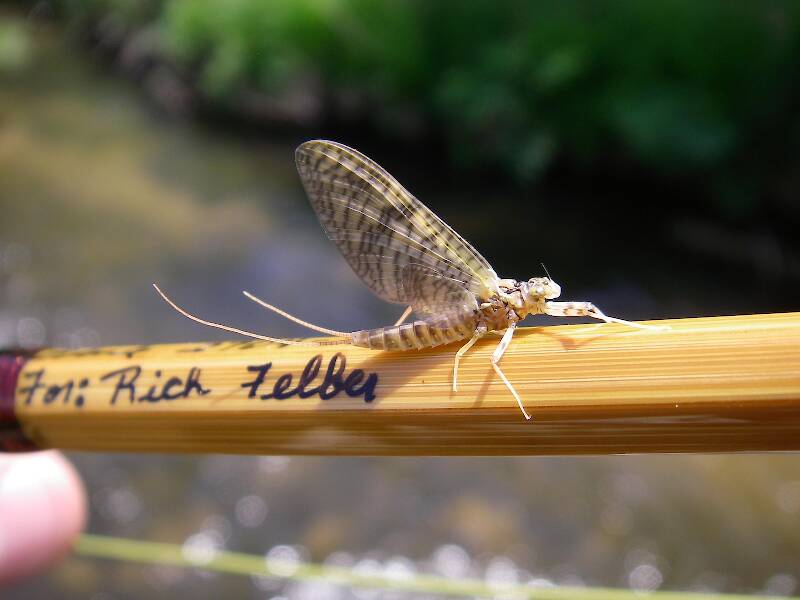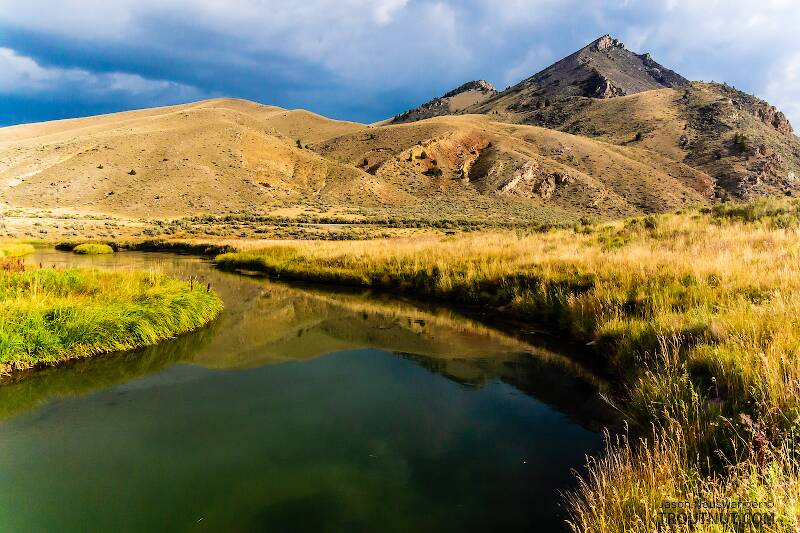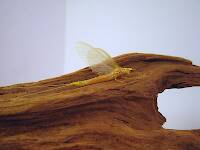
Blue-winged Olives
Baetis
Tiny Baetis mayflies are perhaps the most commonly encountered and imitated by anglers on all American trout streams due to their great abundance, widespread distribution, and trout-friendly emergence habits.
Featured on the forum

This species was fairly abundant in a February sample of the upper Yakima.

Troutnut is a project started in 2003 by salmonid ecologist Jason "Troutnut" Neuswanger to help anglers and
fly tyers unabashedly embrace the entomological side of the sport. Learn more about Troutnut or
support the project for an enhanced experience here.
Canerodder has attached this picture to aid in identification. The message is below.

Canerodder
Posts: 1
Posts: 1
Canerodder on May 26, 2009May 26th, 2009, 3:52 pm EDT
Found this guy on a small creek in west Michigan yesterday around 1:30pm....a few ive talked with thought March Brown...but it was very cream colored?
GONZO on May 26, 2009May 26th, 2009, 5:43 pm EDT
Looks like a female M. vicarium dun (March Brown/Gray Fox) to me.
Konchu on May 27, 2009May 27th, 2009, 1:30 am EDT
We've had a lot of March Browns out this spring in Indiana. The light color could be because this one just emerged from the nymph stage. It takes them a bit to darken up.
Wiflyfisher on May 27, 2009May 27th, 2009, 5:02 am EDT
We've had a lot of March Browns out this spring in Indiana. The light color could be because this one just emerged from the nymph stage. It takes them a bit to darken up.
Just adding to what Konchu is saying... If you ever put your rod down and pick up a seine and capture some duns as they are emerging from their nymphal case you will probably be "dun shrucked" how much lighter they can be at this time.
I have observed that some duns spend too much time sunning themselves and get sun burned easily, which accounts for the color variations.
John S.
https://WiFlyFisher.com
https://WiFlyFisher.com
Martinlf on May 27, 2009May 27th, 2009, 8:56 am EDT
Also check the dorsal and ventral sides for the difference in color to consider what the fish sees.
"He spread them a yard and a half. 'And every one that got away is this big.'"
--Fred Chappell
--Fred Chappell
Quick Reply
Related Discussions
Topic
Replies
Last Reply
1
Aug 21, 2007
by Gene
by Gene
1
May 11, 2007
by Troutnut
by Troutnut
0
May 6, 2011
by Jtberez
by Jtberez





